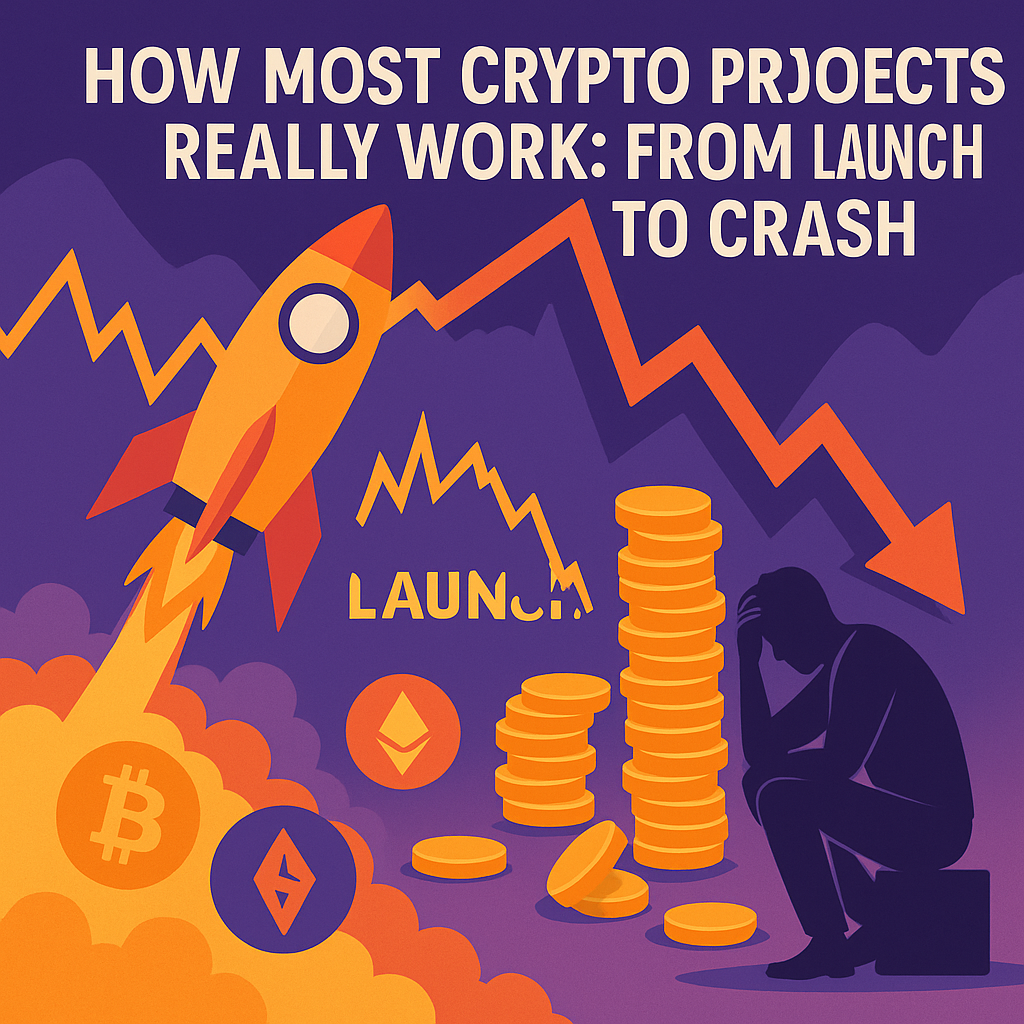How Most Crypto Projects Really Work: Inside the Pump and Dump

Imagine if back in the day, stuff like Photoshop launched their own tokens and people actually bought them, saying,
“This is such an awesome product, everyone will be using it in a few years — we gotta buy their tokens now!”
Sounds kinda weird, right?
Photoshop survived just fine without needing a token. They just sell licenses and subscriptions — that’s it.
Today though, a ton of crypto projects have their own tokens. You use them to pay fees, access services, and all that. Basically, they figured out how to monetize through tokens.
Then you’ve got projects where we’re basically just buying hope — betting it’s a solid project with a future, like buying shares in a factory.
The SEC keeps fighting with projects trying to pass off their tokens as “securities” — cracking down on presales, staking programs, etc.
If the project’s legit and the team’s actually working, it’s all good.
But what happens with 98% of projects?
Here’s a simple example — your brain will handle it:
Say I’m a guy with a bunch of cash. A few of my buddies are loaded too.
Let’s say we’ve got $50 million. In traditional finance, we might earn 10–20% a year.
In crypto? We could make 200–1000% in 6–12 months.
So what do we do?
– We start hunting for some smart blockchain engineers.
– We hang out at crypto expos in places like Dubai, Hong Kong, scouting for promising projects.
– We find a decent one, sit down, cut a deal, and hand them some seed money.
Next:
1. Fire up a killer marketing campaign.
2. Pay influencers (or give them tokens) to hype it up.
3. Run private presales — selling early tokens dirt cheap to other greedy folks.
4. Launch public presales on platforms like DAO Maker.
5. Pay exchanges to list our token (yes, it costs serious money + extra tokens).
6. Bring in market makers — the guys who control price action and liquidity.
7. Throw an airdrop lottery to the public (free tokens for doing small tasks like liking tweets or testing the app).
While all this is happening, our social media numbers blow up.
Binance, by the way, really cares about how big and active your community is.
Now the machine is rolling. The project is “alive.”
People get their free tokens from the airdrop and rush to sell them — thanking the project for the “free money.”
The market maker scoops those cheap tokens right back up.
The price?
– Crashes a bit after the initial listing.
– Shakes out all the airdrop sellers and early buyers.
Then the token moves into a dead zone — low volume, little movement.
Or it just slowly bleeds out over time.
After a while — BOOM — a pump wave hits.
Newbies FOMO in, seeing green candles everywhere.
Another cash-out. Another wave over. Repeat.
After a few good pumps, the big investors cash in heavy.
Now they’ve got enough funds to move the market themselves — no more market makers needed.
They keep stirring up fake activity, fake hype, fake news through influencers.
Eventually, market makers exit the picture (per their deals), and the token starts slowly dying, only seeing occasional mini-pumps.
As one guy said,
“The hardest part is dumping the big bags. If you dump too fast, you crash the price and scare off the bagholders.
You gotta do it slowly — ideally when Bitcoin’s dropping too, so it looks ‘natural.’”
During bear markets, most altcoins happily lose 95–98% of their value.
And the big players already have money set aside to pump it again when the next bull market comes.
Maybe I explained it a bit rough — but that’s the honest reality.
This is how most crypto projects live and die.
The more hyped the token — the harder they’re playing hamsters (retail investors) like us.
And guess what?
Nobody’s really held accountable for this.
It’s just like what happened in The Wolf of Wall Street —
they sold worthless “pink sheet” stocks to regular folks, hyping up fake futures, and dumped them quietly.
Same thing here:
You can make money, but you gotta catch the pump early, ride one or two waves, and then bail out.
New project?
New hustle.
I’ll share more about that strategy in another post.
Main point here:
Don’t fall in love with crypto projects.
Don’t worship them.
If you must trust something, trust only Bitcoin.
The rise of meme coins like Doge, Shiba, Floki, Pepe proves it:
They have zero fundamentals — just hype, insane pumps, and thousands of people buying the top and losing 90% of their cash.
I’ll keep digging into this stuff in upcoming audio posts too. Stay tuned.



Comments are closed.